Dominique Luchart's Blog, page 738
October 15, 2020
This is Sony’s Spatial Reality Display, and you can buy one for $5,000 in November,

Two days ago, I received a giant heavy metal wedge from Sony. The largest side contained a camera, and a 15.6-inch 4K screen.
I plugged it into a powerful gaming computer, and fired up the first demo. A tiny, intricately detailed Volkswagen Atlas materialized in front of my face — and when I pressed a button, it floated right up out of the screen. A couple minutes later, I was watching a 4-inch tall anime girl dance her heart out inside Sony’s contraption, tapping her feet atop a floor of hexagonal mirrors. It’s the magic of stereoscopic 3D.
The wedge is Sony’s new Spatial Reality Display, and it’s not remotely a new idea — it’s just the industry’s latest attempt to build a so-called “holographic display” for the content creators of the world who’d like to see their digital objects and designs appear in their physical space. Nor is it the least expensive at $5,000 — a 15.6-inch, 4K Looking Glass costs $3,000, and lets multiple people see those images simultaneously.
But Sony says the combination of a high-speed face- and eye-tracking camera, real-time algorithms and extremely fine, precisely adjusted lenticular lenses provide a clearer image than any previous display. And while I don’t have a competitor to try side by side, and I can’t actually show you any examples on your 2D computer screen, Sony’s demoes were mostly pretty impressive.
[image error]
 A close-up video I shot while moving my phone, just to show how the lenticular lenses provide different perspectives for each eye.GIF: Sean Hollister/The Verge
A close-up video I shot while moving my phone, just to show how the lenticular lenses provide different perspectives for each eye.GIF: Sean Hollister/The VergeI have to admit, the illusion is easy to break. You’re looking into a virtual diorama roughly 13″ by 6″ by 5″ by my estimates, and any virtual objects deeper or taller than that will simply get cut off by the edges of the display. If you lean in too close or too far to any side, Sony’s camera can’t track you and the 3D effect can twitch and disappear. The image also twitched when my wife tried to get a glimpse alongside me. Perhaps the camera can’t keep up with multiple people.
But those limitations didn’t keep me from counting every cobblestone in a beautiful bistro scene, peering into the restaurant with its tiny wooden chairs and tables — each with their own curved metal armrests and individual slats — admiring details like the baskets of plants hanging from the lampposts and strings of colored lights spanning the street, and almost leaning far enough to see through the arch on the right.
 Flat pictures do not do it justice. Imagine if this were a diorama in front of you.Photo: Sean Hollister/The Verge.
Flat pictures do not do it justice. Imagine if this were a diorama in front of you.Photo: Sean Hollister/The Verge.Later, I got to gaze upon a Ghostbusters Ecto-1 in all its glory, with a full interior, twin-rimmed steering wheel, loads of gleaming chrome handles and trim reflecting a real-time light source, and 31 fully-functional lights including its spinning blinkers and rocket taillights. That demo (and the display) are also compatible with the Leap Motion for 3D gesture control, though I found it a little touchy.
Personally, I already think you can get a much better sense of virtual objects with a good VR headset than a screen like this, but Sony claims its target audiences wanted a stationary monitor that can live atop their desk.
Most of the demos were built in Unity, though Sony says it has an SDK for both Unity and Unreal, and says it should be easy to port VR content over from either platform. The company says the 500-nit 4K display supports 100 percent of the Adobe RGB color gamut, and while Sony does recommend at least an Intel Core i7-9700K and Nvidia GeForce RTX 2070 Super or better to drive the display, it does come with its own built in 2.1 speaker system that gets fairly loud (and has dedicated volume buttons at the top edge).
Sony says it’s already seeded the new display with engineers at companies including Volkswagen, filmmakers like its own Ghostbusters studio Ghost Corps, and “one of the largest architectural firms in the world” as well. But the company doesn’t want to limit potential adoption to partners — it’ll be opening direct sales to anyone who might want one at its own website in November.
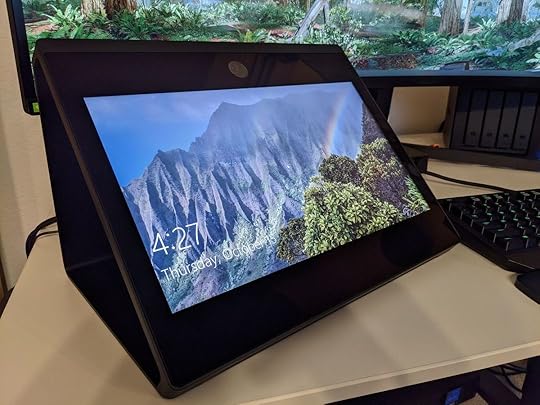 You can use it as a flat monitor in a pinch, but the lenticular lenses make it seem quite low-res that way.Photo: Sean Hollister/The Verge
You can use it as a flat monitor in a pinch, but the lenticular lenses make it seem quite low-res that way.Photo: Sean Hollister/The VergeYou can also sign up to attend a virtual demo on October 22nd at 3PM ET, though I can’t imagine that will really help make up your mind about a display you need to see in 3D.
The post This is Sony’s Spatial Reality Display, and you can buy one for $5,000 in November, appeared first on NEWDAWN Blog.
Sony confirms the new PlayStation Store won’t let you buy PS3, PSP and Vita games outside those consoles,

If you prefer buying older PlayStation games over the web or on mobile, you won’t be able to do that for much longer. Sony is sending emails to PlayStation gamers that confirm a revamped digital storefront coming between October 21st and 26th, which will remove users’ options to purchase games and DLC released initially on the PS3, PSP, and Vita from a mobile device or PC. Planete Vita originally reported the news last week, citing developer sources.
The PlayStation web store will remove the option to purchase those games, and the mobile app’s update will be available on October 28th. Users will still be allowed to make new purchases for PlayStation legacy titles, but they will have to purchase them directly from PS3, PSP, Vita, or PS4 gaming consoles. However, it is important to note that this only applies to new purchases, and any previous purchases for any legacy PlayStation titles and downloadable content will remain accessible through your PlayStation account.
Sony will also remove the ability to download apps, themes, and avatars for PS4 on both web and mobile, but they can still be downloaded on the console. The PlayStation Store’s wishlist feature is also being discontinued, so any wishlist items you have on there will be removed from your account.
Here’s the full email in image form:

Update October 15th, 6:38PM ET: Added confirmation from Sony via customer email.
The post Sony confirms the new PlayStation Store won’t let you buy PS3, PSP and Vita games outside those consoles, appeared first on NEWDAWN Blog.
Your new Samsung smart TV will soon double as a Google Assistant microphone,

Google Assistant is now available on newer Samsung smart TVs in the US, the companies announced. The AI helper will be available on Samsung 2020 smart TV models, including the 2020 8K and 4K QLED models, the 2020 Crystal UHD TVs, 2020 Frame and Serif sets, and 2020 Sero and Terrace models. The update will be available in the US first and roll out to more countries soon, according to Google.
Pressing down on the TV’s remote control mic will activate Assistant, and users will be able to switch channels, open apps, and adjust the TV’s volume with voice commands. The TVs already had voice command settings available that could be controlled with the mic on the remote, but you’ll have to tell it you want to use Google Assistant rather than Samsung’s default Bixby assistant. And you can control other smart home devices you have connected to Google Assistant, too. After installing an OTA update, users can enable Assistant on their Samsung TV by going to Settings > General > Voice > Voice assistant.
There were hints that Samsung was considering more uses for Google Assistant, with reports over the summer that the companies were negotiating to feature Assistant more prominently on Samsung devices. It’s not totally clear what this means for Bixby, which Samsung introduced in 2017, but the company reportedly has started phasing out some Bixby augmented reality features.
Google also announced that the Assistant-enabled Lenovo Smart Clock Essential is now available, which we reviewed in August. The clock, which goes for $49.99 — a good bit cheaper than other voice-assisted clocks — can stream playlists and podcasts, add items to shopping lists, make calls, and control other compatible smart devices.
The post Your new Samsung smart TV will soon double as a Google Assistant microphone, appeared first on NEWDAWN Blog.
Twitter is experiencing a massive outage right now,

Twitter is experiencing an outrage that began in the early evening on Thursday, with some users reporting problems sending tweets and refreshing their timelines starting shortly after 5:30PM ET. We have seen no new tweets cross our timelines since then, though we were able to find a tweet sent as late as 5:40PM ET using Twitter’s search tool.
User-generated reports on Downdetector.com are skyrocketing as well, but there’s no communication from the company itself as to the nature of the outrage. Twitter’s last major outage, occurring in February of this year, still allowed users to circumvent that outage by scheduling tweets. This does not appear to be a useable workaround right now.
Verge staffers are seeing the outage across the United States and in the UK, though we have been able to send a few DMs through the platform.
Twitter’s API status website still says everything is operational, although Twitter’s systems may be hindered in a way that prevents the company from updating the page. Twitter didn’t immediately respond to a request for comment.
Developing…
The post Twitter is experiencing a massive outage right now, appeared first on NEWDAWN Blog.
Twitter’s massive outage may be over, company says ‘no evidence’ of hack,

Twitter has been experiencing an outage that began in the early evening on Thursday, with some users reporting problems sending tweets and refreshing their timelines starting shortly after 5:30PM ET. Just after 7PM ET, tweets began to cross our timelines, and things may be returning to normal.
“We have no evidence of a security breach or hack, and we’re currently investigating internal causes,” a Twitter spokesperson said in a statement to The Verge. Twitter posted a similar message to its status page and via the @TwitterSupport Twitter account.
Twitter has been down for many of you and we’re working to get it back up and running for everyone.
We had some trouble with our internal systems and don’t have any evidence of a security breach or hack.
— Twitter Support (@TwitterSupport)
Twitter’s last major outage, occurring in February of this year, still allowed users to circumvent that outage by scheduling tweets. This wasn’t a useable workaround during the outage, as far as we could tell. Verge staffers were seeing the outage across the United States and in the UK, though we were able to send a few DMs through the platform while the outage was happening.
Twitter’s API status website initially said everything was operational. At 5:56PM ET, Twitter posted a message to the API page reading, “Investigating — We are currently investigating this issue. More updates to come.” At 6:31PM ET, there was a new but also unspecific message: “We are continuing to monitor as our teams investigate. More updates to come.”
Update 7:21PM ET : Added official tweet from Twitter.
Update 7:04PM ET : Added new statement from Twitter and updated headline.
Update 6:54PM ET : Added new update from Twitter’s API page and changed headline to say that the outage has lasted for more than an hour.
Update 6:28PM ET: Added Twitter statement.
Update 6:11PM ET: Added an update detailing the note on Twitter’s API page.
The post Twitter’s massive outage may be over, company says ‘no evidence’ of hack, appeared first on NEWDAWN Blog.
FAA cuts the red tape for commercial rocket launches (and landings, too), ,

Commercial space is about to become more accessible than ever before.
Today (Oct. 15), the U.S. Federal Aviation Administration‘s (FAA) Office of Commercial Space Transportation (AST) announced that it has published a new launch and re-entry rule known as the Streamlined Launch and Re-entry Licensing Regulation-2 (SLR2). The new rule aims to increase launch and reentry access for commercial space companies while maintaining safety.
“We’ve seen the first launch of American astronauts into orbit aboard an American-built rocket since the end of the space shuttle program in 2004, to the International Space Station,” United States Secretary of Transportation Elaine Chao, said in a news conference today, referring to SpaceX’s two-month Demo-2 mission, which lifted off on May 30.
“Our country is headed towards a record year in commercial space, and our goal in finalizing this new regulation is to keep it that way,” Chao said.
“We’re cutting the red tape that has held this industry to the launch pad for far too long,” FAA assistant administrator for communications Brianna Manzelli said at the news conference.
Related: Trump’s Space Policy Directive 2 could make life easier for SpaceX & others
This new rule is rolled out under the President’s Space Policy Directive-2 (SPD-2), which was enacted in 2018. SPD-2 guides the Secretary of Transportation to create a new regulatory structure for launch and re-entry activities. The directive also advises the Secretary to consider allowing commercial operations to launch and re-enter Earth’s atmosphere with just a single license (as opposed to having to get a new license for individual activities).
And with SLR2, the FAA has done just that. Now, only a single license is required “for all types of commercial space flight launch and re-entry operations,” according to SLR2, which “increases flexibility for launch and re-entry vehicle operations.”
With SLR2, the FAA aims to streamline launch and re-entry procedures, so, “while it is laser-focused on public safety, it only regulates to the extent necessary,” Wayne Monteith, the FAA’s associate administrator for commercial space transportation, said during the news conference today. “The goal is to simplify the licensing process and a lot of novel operations, reduce costs and positioning both the industry and the FAA for the rapid increase in the number of launches that are coming, all without compromising safety.”
One interesting component of this new regulation sort of gets rid of the old rules that stated that the license for a launch would “begin” or take effect upon arrival at the launch site — for example, the gate at Cape Canaveral Air Force Station in Florida.
Instead, now, “an individual company can, in essence, negotiate with us when they want the license to begin,” Monteith said. “It reduces [the] burden on the individual stakeholder. And it certainly reduces [the] burden on government to monitor operations that have little to no impact on public safety.”
Email Chelsea Gohd at cgohd@space.com or follow her on Twitter @chelsea_gohd. Follow us on Twitter @Spacedotcom and on Facebook.
Join our Space Forums to keep talking space on the latest missions, night sky and more! And if you have a news tip, correction or comment, let us know at: community@space.com.
The post FAA cuts the red tape for commercial rocket launches (and landings, too), , appeared first on NEWDAWN Blog.
Go read about the dire working conditions for Ring’s call center employees in the Philippines,

Amazon extended its work-from-home policy into 2021 for corporate employees, but call center workers in the Philippines contracted by the company’s Ring subsidiary continue to work in person with increased risk of COVID-19 infection, as detailed in a report for NBC News by Olivia Solon and April Glaser.
Employees of Teleperformance — contracted by Ring in the Philippines — describe little to no support in making their workplace safer during the pandemic. The company is under increased scrutiny after photos of employees sleeping in its offices in Cebu City were released by the press. Solon and Glaser report that Teleperformance continues to downplay concerns even with new pressure to modify policies from worker organizations like BPO Industry Employees Network.
Per Ring’s policies, workers are not allowed to work from home to better maintain the security of customer data. This hasn’t created a safer workplace, according to the testimony of four workers Solon and Glaser interviewed for the report. Besides close contact with co-workers, they describe inadequate cleaning of shared, high-touch workspaces and inconsistent transportation to and from the call center as the most pressing concerns.
Employees took great risk to share their accounts, but meaningful changes seem distant given Ring’s stance on security and the high demand for call center labor in the Philippines. Solon and Glaser’s report is a reminder of the inequity experienced by workers critical to services offered by the largest American corporations. The personal touch expected by customers comes at a cost — and leaves workers with few options.
The post Go read about the dire working conditions for Ring’s call center employees in the Philippines, appeared first on NEWDAWN Blog.
Facebook is accidentally locking some users out of their new Oculus headsets,
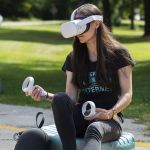
Facebook says a “small number” of customers have been locked out of their new Oculus Quest 2 headsets, following a string of reports that buyers were unable to use the virtual reality headsets because their Facebook accounts were suspended. On Twitter, it urged users to contact Oculus if they had problems.
As UploadVR reported yesterday, users complained that they had been suspended for unclear reasons while they were trying to set up the Quest 2. One poster on the Oculus subreddit, for instance, described getting banned after creating a Facebook page for the first time and merging it with an existing Oculus account. “I logged into Facebook’s website to lock down my profile, as I had no intention of using the social media site more than was needed, and within minutes of merging accounts and changing profile settings my account was banned without any reason given or cause I can think of,” the user told The Verge in an email — rendering the Quest 2 a “new white paperweight.” Other people in the subreddit chimed in with their own experiences getting locked out.
We’re aware a small number of customers are having trouble using Quest 2 with their Facebook accounts. If you’re one of the few who’s having trouble getting set up, we’re ready and available to help. Just reach out and start a ticket: https://t.co/W0iGW16GqS
— Oculus Support (@OculusSupport)
The Quest 2 is the first Oculus headset to require a Facebook login rather than a login with a separate Oculus account. Many existing customers used Oculus accounts on previous headsets, and setting up the Quest requires merging them — a process that, for some users, has gone far from seamlessly. Oculus promised in a statement to UploadVR that this wouldn’t permanently compromise access to purchased games. “Someone may temporarily experience an issue accessing content if they have trouble logging in to Quest 2 with their Facebook account, but they will be able to access their content once those login issues are resolved,” a spokesperson said.
New Oculus buyers who are already active Facebook users may see fewer problems, as they’re simply prompted to sign up via Facebook without needing to merge any accounts.
The potential for lockout was a known risk for the Oculus Quest 2, which was announced in September and shipped yesterday. Facebook requires people to use their real names on its service, and it suspends accounts that it believes are inauthentic. It may reinstate them if users send pictures of driver’s licenses or other proof of identity, but the process can be slow, impersonal, and hit-or-miss thanks to Facebook’s massive scale.
The post Facebook is accidentally locking some users out of their new Oculus headsets, appeared first on NEWDAWN Blog.
October 14, 2020
The best anti-Prime Day 2020 deals,

You’re probably aware that Amazon Prime Day 2020 is in its final day, the big annual sale full of deals that are exclusive to Prime members. However, other retailers are putting up some of the year’s best deals in response, and you don’t need a membership to reap the savings. Whether you’re anti-Amazon or just want to see what’s available elsewhere, we’ve pulled together the best deals happening at retailers like Walmart, Best Buy, GameStop, the Microsoft Store, Newegg, and more.
We’ll be updating this post with new links once they go live and striking through products that have sold out. The products listed below have never been more affordable. Products that didn’t meet that bar aren’t included in this post.
Latest deals added
Sony’s WH-1000XM4 wireless noise-canceling headphones are $298 at Best Buy and include a $25 gift card (usually $350). B&H Photo is also matching Amazon’s price
Headphones
 Beats PowerBeats Pro headphonesPhoto by Chris Welch / The Verge
Beats PowerBeats Pro headphonesPhoto by Chris Welch / The VergeBose’s QuietComfort 35 II wireless noise-canceling headphones are $199 at Best Buy (usually $300), matching Amazon’s Prime Day 2020 price
Sony’s WH-1000XM4 wireless noise-canceling headphones are $298 at Best Buy and include a $25 gift card (usually $350). B&H Photo is also matching Amazon’s price
Apple’s AirPods with a wireless charging case are $160 at Walmart and Target (usually $200)
Apple’s AirPods Pro are $200 at Walmart (usually $250)
Beats Studio 3 over-ear wireless headphones with noise cancellation are $200 at Target (usually $350), matching the best-ever price
Beats’ newer Solo Pro on-ear noise-canceling headphones are $180 at Best Buy (usually $300)
Beats Powerbeats Pro wireless earbuds are $175 in the beige or black colors at Best Buy (usually $250), matching Amazon’s Prime Day 2020 price. Other colors are $200
Televisions
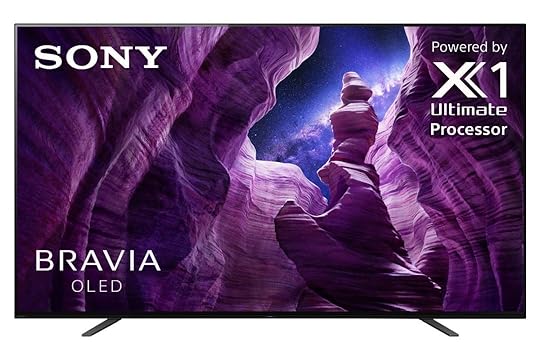 Sony’s 55-inch XBR55A8H OLED TV.Photo: Sony
Sony’s 55-inch XBR55A8H OLED TV.Photo: SonyJVC’s 55-inch 4K TV with Roku software built in is $248 at Walmart, beating the lowest price yet by around $20. This model normally sells for $400.
Samsung’s 55-inch Q60T QLED 4K TV (QN55Q60TAFXZA) is $598 at Best Buy, matching the lowest price yet. This model usually sells for $700.
Samsung’s 55-inch Q90T QLED 4K TV (QN55Q90TAFXZA) is $1,298 at Best Buy, beating the previous lowest price by about $125. The regular price is $1,500.
Sony’s 55-inch OLED 4K TV (XBR55A8H) is $1,300 at Best Buy, beating the previous best price by $200. This model regularly sells for $1,900.
TCL’s 50-inch 4-series 4K TV with Android TV software built in (50S434) is $230 at Best Buy, beating the previous best price by $50. This model usually sells for $280.
Samsung’s 70-inch 4K TV (UN70TU6980FXZA) is $530 at Best Buy, beating the previous best price by $220. It usually sells for $750.
Find more excellent deals on TVs right here
Laptops and tablets
 Samsung Tab S7 Plus tablet.Photo by Dan Seifert / The Verge
Samsung Tab S7 Plus tablet.Photo by Dan Seifert / The VergeHyperdrive’s USB-C 6-in-1 hub for the iPad Pro is $63 at Best Buy (usually $90), beating its previous best price of $93
Samsung’s Galaxy Tab S7 (128GB) is $550 at Best Buy, beating its usual price by $100
Samsung’s Galaxy Tab S7 Plus (128GB) is $750 at Best Buy, beating its usual price by $100
Samsung Galaxy Tab S6 Lite (64GB) is $250 at Best Buy (usually $350), beating its lowest price by $30
Samsung’s Galaxy Book Flex (12GB, i7, 512GB) is $1,200 at Best Buy, beating the usual price by $200
Lenovo’s Yoga C940 laptop (4K, i7, 16GB RAM, 512GB) is $1,200 at Best Buy (usually $1,500), which is $200 lower than its previous best price
Samsung’s Galaxy Book Ion is $1,000 at the Microsoft Store (usually $1,100), beating its lowest price by $50
Samsung’s 11-inch Chromebook 4 is $200 at Walmart (usually $250)
Gaming and PC
A one-year PlayStation Plus subscription costs just $30 at CDKeys.com (usually $60)
The Last of Us Part II (standard edition) is $40 at Best Buy (usually $60)
The Asus TUF B550M-Plus PCIe 4.0 Micro ATX gaming motherboard that supports AMD’s AM4 CPU sockets is $128 at Newegg (usually $155), matching Amazon’s own price during Prime Day 2020
Zotac’s compact GeForce RTX 2060 6GB graphics card is $290 at Newegg after you use the offer code (usually $340), beating the lowest price of $300
EVGA’s 750W 80 Plus Gold modular desktop power supply is $100 at Newegg, which is $30 off of its usual price
Corsair Vengeance 32GB (2 x 16GB) 288-pin DDR4 3600 RAM is $120 at Newegg (usually $140)
Misc. gadgets
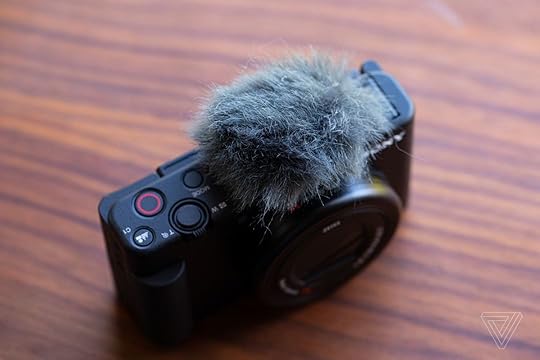 Sony ZV-1 cameraPhoto by Vjeran Pavic / The Verge
Sony ZV-1 cameraPhoto by Vjeran Pavic / The VergeGarmin’s Fenix 5X Plus GPS smartwatch is $400 at Best Buy (usually $600), which is $100 lower than the previous best price
Sony’s ZV 1 camera is $700 at Best Buy, which is steeply discounted from its usual $800 price
The DJI Osmo Pocket with accessories is $280 at B&H Photo, beating Amazon’s price of $300 at Amazon for the model that includes a charging case. This is $120 less than its usual price.
Get a Google Nest Hub Max smart display and the new Chromecast with Google TV for $245 at Target (usually $280 together)
SimpliSafe’s Entryway Kit (containing a Video Doorbell Pro, entry sensor, base station, and keypad) is $160 at Best Buy. This product usually costs $300.
The post The best anti-Prime Day 2020 deals, appeared first on NEWDAWN Blog.
Best Prime Day 2020 deals on Chromebooks and Windows laptops,

If you are looking for a new Windows laptop or Chromebook, whether it’s for school, video meetings with friends, or even for your new work from home setup, you might want to consider taking a peek at Amazon’s Prime Day sales. The online retail giant (along with a few of its competitors) has a bunch of laptops on sale that should fit most budgets.
Amazon has slashed the prices on laptops from several manufacturers, including Acer, Asus, Razer, and Samsung. Prices on these products will vary depending on numerous options, such as specs, configuration, and screen size. But fortunately, most of the better laptop deals we’ve found won’t burn a major hole in your wallet.
Surface Pros / Surface Laptops
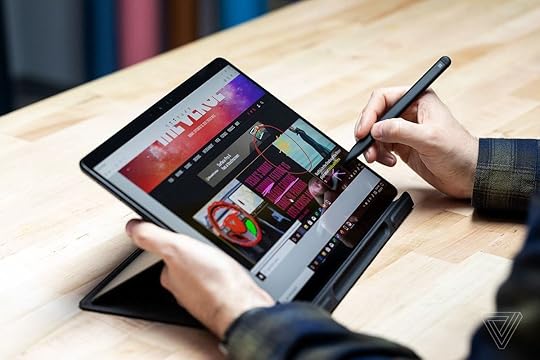 Microsoft’s Surface Pro XPhoto by Amelia Holowaty Krales / The Verge
Microsoft’s Surface Pro XPhoto by Amelia Holowaty Krales / The VergeYou can save up to $300 off the Surface Pro X in Matte Black color variant at the Microsoft Store
The new Surface Pro 7 is discounted at the Microsoft Store, with savings ranging anywhere from $100 to $300 depending on your configurations
You can buy a 13.5-inch Surface Laptop 2 (Intel Core i5-8250U Quad-Core, 256GB SSD, 8GB RAM) for $790 at Woot (usually $1,300). It comes with a full year warrant, but Woot notes on the product listing that the laptop has a French / English keyboard layout.
Windows Laptops
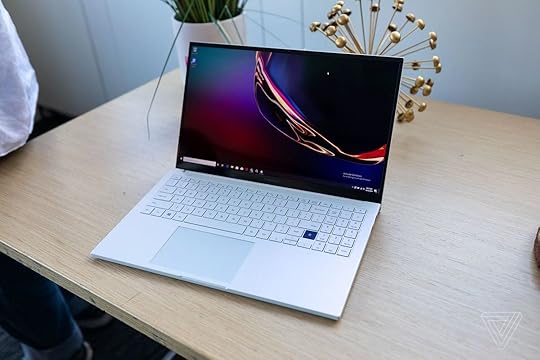 Samsung’s Galaxy Book Ion 13 Photo by Chaim Gartenberg / The Verge
Samsung’s Galaxy Book Ion 13 Photo by Chaim Gartenberg / The VergeSamsung’s Galaxy Book Flex (12GB, i7, 512GB) is $1,200 at Best Buy (usually $1,400), lower than the best-ever price
Samsung’s Galaxy Book Ion 13 is $1,000 at the Microsoft Store (usually $1,200), lower than the best-ever price
Lenovo’s Yoga C940 laptop (4K, i7, 16GB RAM, 512GB) is $1,200 at Best Buy (usually $1,600), lower than the best-ever price
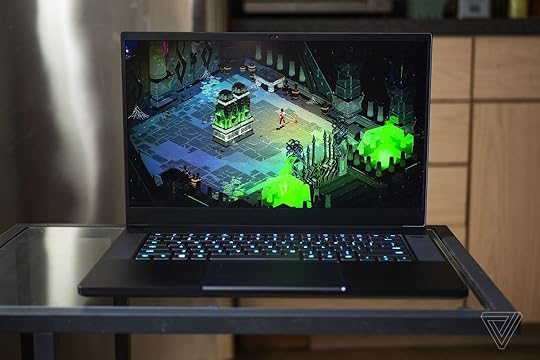 Razer Blade 15 Advanced.Photo by Cameron Faulkner / The Verge
Razer Blade 15 Advanced.Photo by Cameron Faulkner / The VergeRzer’s Blade 15 Base edition (i7-10750H, GTX 1660 Ti, 144Hz refresh rate, 16GB RAM, 256GB SSD) is $1,300 at Amazon (usually $1,600), lower than the best-ever price
Asus ZenBook Duo UX481 is $1,000 at Amazon (usually $1,300), lower than the best-ever price
Gigabyte’s Aero 15 (i7-9750H, GTX 1660 Ti, 16GB RAM, 512GB PCIe SSD, UHD OLED panel) is $1,150 at Amazon (usually $1,900), lower than the best-ever price
Chromebooks
Samsung’s 11-inch Chromebook 4 is $199 at Walmart (usually $250)
HP’s 2-in-1 14-inch Touch-Screen Chromebook is $499 at Best Buy (usually $629)
Asus Chromebook Flip C434 is $400 at Amazon (usually $500), lower than the best-ever price
The post Best Prime Day 2020 deals on Chromebooks and Windows laptops, appeared first on NEWDAWN Blog.



